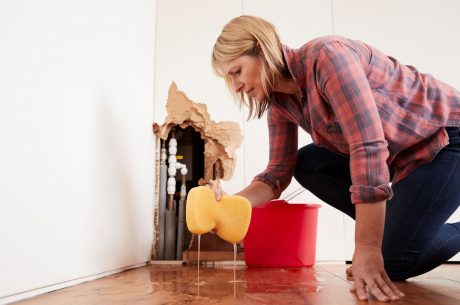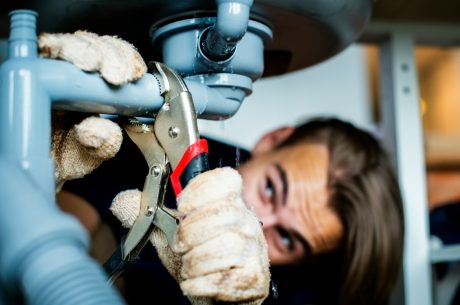Water damage can strike any Michigan home, causing significant inconvenience and costly repairs. Our state’s unique climate, with its heavy rainfall, snowfall, and occasional flooding, makes it especially important to take proactive steps to safeguard your property. In this article, we’ll provide practical advice to help you understand the causes of water damage and implement preventive measures to protect your home.
By understanding the common causes of water damage and inspecting and maintaining your home’s infrastructure, you can reduce the risk of water-related issues. Regular maintenance of roofs, gutters, and foundations, along with proper plumbing upkeep, plays a crucial role in prevention. Moreover, adopting proactive measures such as installing sump pumps and using water-resistant materials can enhance your home’s resilience against water damage.
Emergency preparedness is equally important. Having a plan in place and knowing the steps to take immediately after discovering water damage can help minimize the impact on your home and belongings. Join us as we explore these vital strategies to protect your Michigan home from water damage.
Understanding the Causes of Water Damage in Michigan Homes
Water damage in Michigan homes is often a result of the state’s distinct climate and geography. Michigan experiences significant rainfall, heavy snowfall, and seasonal flooding, all of which can contribute to water damage. During the rainy months, excess water can overwhelm drainage systems and seep into basements or foundations. In winter, ice dams may form on roofs, leading to leaks and interior water damage when the ice melts.
Additionally, the state’s proximity to large bodies of water makes some areas more susceptible to flooding. When snow melts in the spring, the runoff can cause rivers and streams to overflow, affecting nearby homes. Understanding these specific environmental factors is key to preventing water damage and safeguarding your property.
Inspecting and Maintaining Home Infrastructure
Regular inspections and maintenance of your home’s infrastructure play a crucial role in preventing water damage. Start by checking your roof for missing or damaged shingles, which can allow water to penetrate. It’s also important to clean and maintain gutters and downspouts to ensure proper water drainage away from your home.
Inspect your home’s foundation for cracks or signs of wear, and seal any gaps to prevent water from entering. Plumbing systems should be checked regularly for leaks, corrosion, or blockages. By keeping these systems in good condition, you can significantly reduce the risk of water damage.
Proper drainage around your home is essential. Ensure that the ground slopes away from your foundation to prevent water from pooling near your home. Regular maintenance and timely repairs can protect your home from potential water damage.
Proactive Measures to Prevent Water Damage
To effectively protect your home from water damage, there are several proactive measures you can take. One essential step is installing a sump pump in your basement to manage excess water and prevent flooding. Sump pumps automatically remove water that accumulates in a sump pit, directing it away from your home’s foundation.
Using water-resistant materials in vulnerable areas can also be beneficial. For instance, choose water-resistant flooring for basements and bathrooms. Additionally, consider grading your landscape to ensure water flows away from your home, rather than pooling around the foundation. Planting native vegetation can help absorb excess water and reduce erosion.
For indoor water damage prevention, routine checks of your appliances, such as washing machines and dishwashers, are necessary. Ensure hoses and connections are secure and replace them if they show signs of wear. Installing water leak detectors near appliances and in basements can alert you to potential leaks before they cause significant damage.
Emergency Preparedness for Water Damage Incidents
Preparing for potential water damage incidents is crucial for minimizing impact and ensuring safety. Start by creating an emergency plan that includes a list of important contacts, such as your insurance company and local emergency services. Ensure all family members know the plan and understand their roles.
Assemble an emergency kit containing essential items like flashlights, batteries, first-aid supplies, bottled water, and non-perishable food. Keep important documents, such as insurance policies and identification, in a waterproof container. Knowing the location of your home’s main water shutoff valve can also help you quickly stop water flow in the event of a major leak.
If you discover water damage, act immediately to mitigate the impact. Begin by safely removing any excess water if possible, and use fans or dehumidifiers to dry out affected areas. Contact a professional water damage restoration service to assess the damage and initiate the cleanup process promptly.
Conclusion
Protecting your Michigan home from water damage involves understanding common causes, maintaining your home’s infrastructure, taking proactive measures, and preparing for emergencies. By staying vigilant and implementing these strategies, you can significantly reduce the risk of water damage to your property.
If you need expert help with water damage prevention or restoration, we at PuroClean of Howell are here to assist. Contact our water restoration experts today to ensure your home is well-protected and to get professional support whenever you need it.




 PuroClean of Howell
PuroClean of Howell